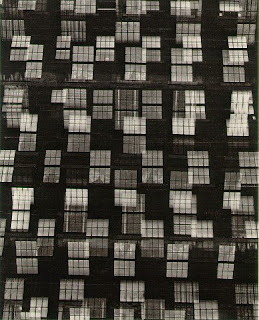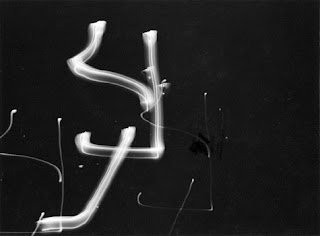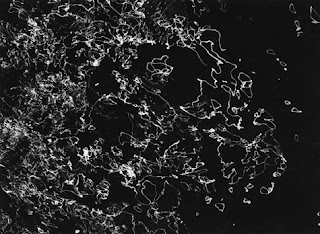Harry Callahan. 1.912-1.999.
Es interesante el perfil del fotografo Harry Callahan, un fotografo de hechos cotidianos, que bajo su sensible percepción se convierten en extraordinarias escenografias. Usa como herramienta la sobreexposición, y explora con los formatos para generar las optimas tensiones de los encuadres.
Fuente: Anthony Luke's Not-Just-Another-Fotoblog Blog
Fuente: Anthony Luke's Not-Just-Another-Fotoblog Blog
Harry Callahan (1912 –1999) was one of the most influential twentieth century American photographers. Born in
Callahan left almost no written records—no diaries, letters, scrapbooks or teaching notes. His technical photographic method was to go out almost every morning, walk the city he lived in and take numerous pictures. He then spent almost every afternoon making proof prints of that day's best negatives. Yet, for all his photographic activity, Callahan, at his own estimation, produced no more than half a dozen final images a year.
He photographed his wife, Eleanor, and daughter, Barbara, and the streets, scenes and buildings of cities where he lived, showing a strong sense of line and form, and light and darkness. He also worked with multiple exposures. Callahan's work was a deeply personal response to his own life. He encouraged his students to turn their cameras on their own lives, leading by example. Callahan photographed his wife over a period of fifteen years, as his prime subject. Eleanor was essential to his art from 1947 to 1960. He photographed her everywhere - at home, in the city streets, in the landscape; alone, with their daughter, in black and white and in color, nude and clothed, distant and close.
Callahan tried several technical experiments - double and triple exposure, blurs, large and small format film.Callahan was one of the few innovators of modern American photography noted as much for his work in color as for his work in black and white.
In 1996, he was awarded the National Medal of Arts.
Callahan died in
















No hay comentarios:
Publicar un comentario
Nota: solo los miembros de este blog pueden publicar comentarios.